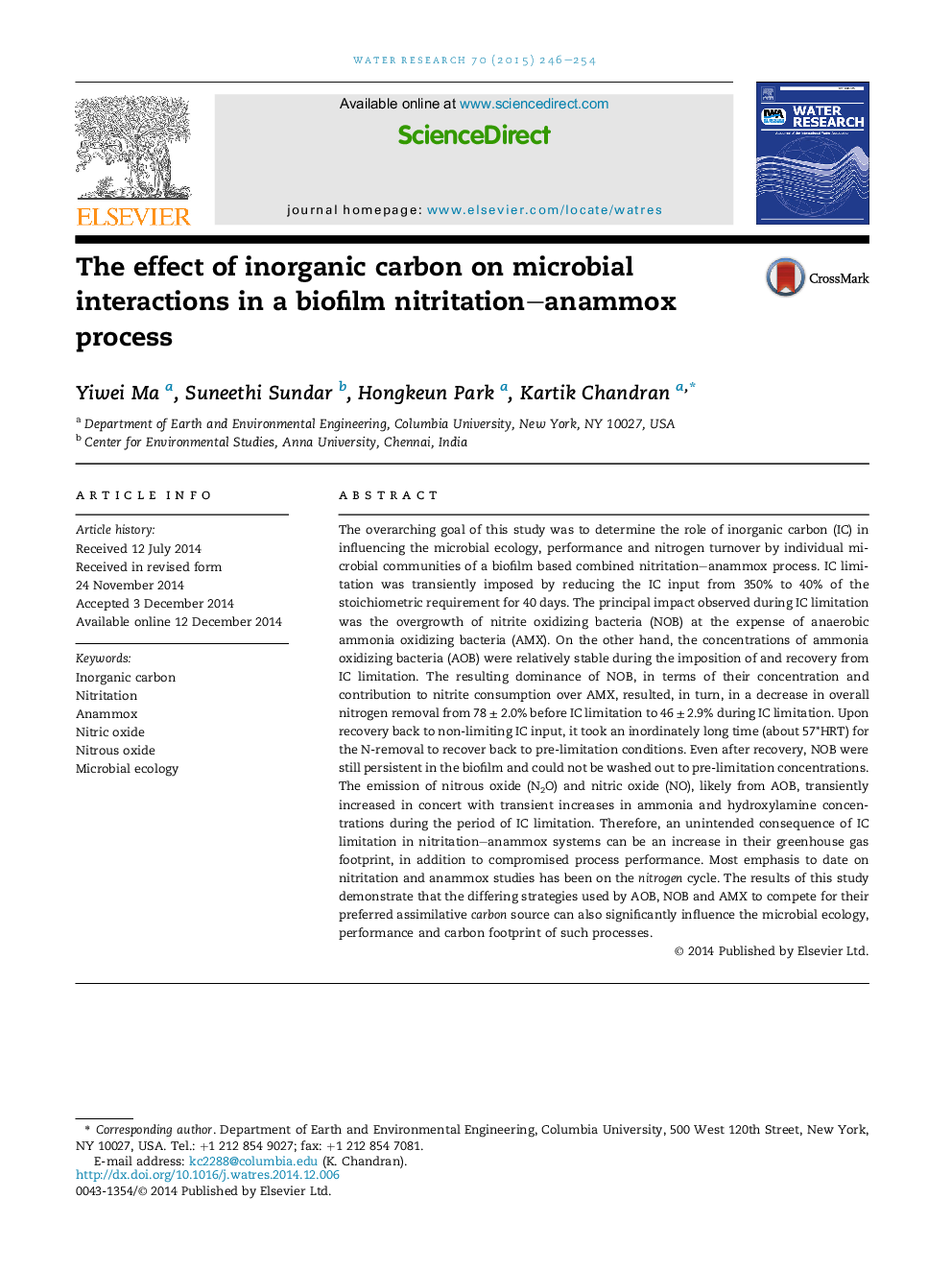| کد مقاله | کد نشریه | سال انتشار | مقاله انگلیسی | نسخه تمام متن |
|---|---|---|---|---|
| 4481310 | 1623098 | 2015 | 9 صفحه PDF | دانلود رایگان |
• Inorganic carbon availability can influence microbial interactions in nitritation–anammox.
• AOB and NOB are more adept at overcoming IC limitation than AMX.
• IC limitation can result in increased emissions of nitrous oxide (N2O) and nitric oxide (NO).
• Increased emissions during IC limitation are likely due to an imbalance in electron fluxes in AOB.
The overarching goal of this study was to determine the role of inorganic carbon (IC) in influencing the microbial ecology, performance and nitrogen turnover by individual microbial communities of a biofilm based combined nitritation–anammox process. IC limitation was transiently imposed by reducing the IC input from 350% to 40% of the stoichiometric requirement for 40 days. The principal impact observed during IC limitation was the overgrowth of nitrite oxidizing bacteria (NOB) at the expense of anaerobic ammonia oxidizing bacteria (AMX). On the other hand, the concentrations of ammonia oxidizing bacteria (AOB) were relatively stable during the imposition of and recovery from IC limitation. The resulting dominance of NOB, in terms of their concentration and contribution to nitrite consumption over AMX, resulted, in turn, in a decrease in overall nitrogen removal from 78 ± 2.0% before IC limitation to 46 ± 2.9% during IC limitation. Upon recovery back to non-limiting IC input, it took an inordinately long time (about 57*HRT) for the N-removal to recover back to pre-limitation conditions. Even after recovery, NOB were still persistent in the biofilm and could not be washed out to pre-limitation concentrations. The emission of nitrous oxide (N2O) and nitric oxide (NO), likely from AOB, transiently increased in concert with transient increases in ammonia and hydroxylamine concentrations during the period of IC limitation. Therefore, an unintended consequence of IC limitation in nitritation–anammox systems can be an increase in their greenhouse gas footprint, in addition to compromised process performance. Most emphasis to date on nitritation and anammox studies has been on the nitrogen cycle. The results of this study demonstrate that the differing strategies used by AOB, NOB and AMX to compete for their preferred assimilative carbon source can also significantly influence the microbial ecology, performance and carbon footprint of such processes.
Figure optionsDownload high-quality image (194 K)Download as PowerPoint slide
Journal: Water Research - Volume 70, 1 March 2015, Pages 246–254
